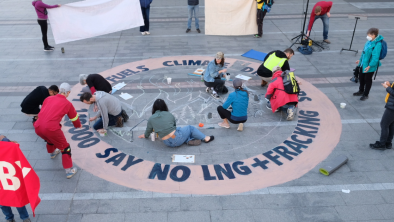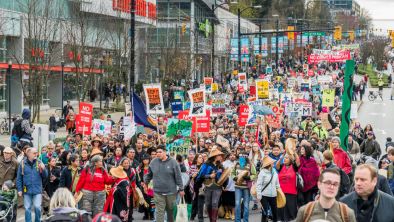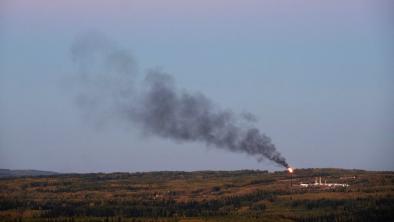Opposition to dams hits high-water mark
Monday, August 10, 2009
Globe & Mail

When a public information meeting on a proposed power project was held in the small village of Kaslo earlier this year, nobody was clear about what to expect.
In the West Kootenays, where a string of huge hydro dams were built during the 1960s and 70s as part of the Columbia River Treaty, would anybody really care about a relatively small proposal to dam Glacier and Howser Creeks?
The B.C. Environmental Assessment Office apparently didn't think so, and held the public information session not in the centrally located, much larger centre of Nelson, but in tiny Kaslo, population 1,029.
When Gwen Barlee, national policy director of the Wilderness Committee, pulled into town on the evening of the meeting, she cast a nervous eye at the sparse gathering.
“Lee-Ann Unger from the West Kootenay Eco-Society, a local organization which had worked hard to raise awareness about the event looked a little dejected,” she later wrote on the Wilderness Committee website. “There were just a few cars sprinkled about, and several people milling around outside.”
The meeting was to be held in a local school gymnasium, and for a while it seemed as if it might be one of those events where you have a cavernous hall and a few listless officials watching flies buzz around.
“Gradually, though, people started to trickle into the parking lot: young families with children, kayakers from Nelson, concerned Kaslo residents, local BC Wildlife Federation members, loggers, fishers, hunters, hippies and business people,” Ms. Barlee wrote.
And the crowd kept growing. Soon it had spilled out of the parking lot, down the street and onto the grass.
Just before the public meeting started a cheer went up, reported Ms. Barlee, as three buses rolled in, jammed with people from Nelson.
For more than three hours, people voiced their opposition to the project and the official attendance count was 1,100 – more than the entire population of Kaslo.
It was a clear sign of the enormous interest in and opposition to the proposed Glacier/Howser independent power proposal, or IPP. The project would see five dams built on the two thundering creeks to generate about 90 megawatts of power for Purcell Green Power Inc., a subsidiary of AXOR Group.
That was in June. But the public interest has not waned.
For several weeks the EAO accepted written submissions from the public.
That process ended July 27, but it took until the end of last week for officials to process and post all the submissions.
Ms. Unger has counted the comments – and there are 1,012 of them.
EcoSociety volunteers have read through about three-quarters of them and report “the vast majority” are opposed to the project.
If the first and last comments posted on the EAO site are any indication of the mood, people are more than a little opposed.
The first submission logged, June 14, is from Josh Milligan. It states in part: “This project is preposterous. Given the terrain they plan to work in and the expense required to operate within acceptable safety margins it simply doesn't make sense. It's inevitable that corners will be cut and environmental impacts will be greater than projected.”
Fast forward to July 27, for the last of the submissions, and you have David Lancaster telling EAO officials: “I pay your salary with my tax dollars. I expect you to do your job, and protect the environment for me, my loved ones, and future generations … I want you to wake up fast, and hear the cries of fearful, angry B.C. citizens.”
A lot of IPPs are running into opposition in the province. People don't seem to much like the idea of a lot of small rivers being dammed by private developers, who will then sell the power to BC Hydro.
In the Kootenays, that opposition has hit a new high water mark.
In Victoria, the government continues to insist its shift to IPPs is a good idea. But a lot of people clearly disagree.
To read the comments, go to the EAO home page , and open the section headed Public Comment Period Closed – Application, Glacier/Howser Project.
This may be the writing on the wall that spells the end of another IPP.
In the West Kootenays, where a string of huge hydro dams were built during the 1960s and 70s as part of the Columbia River Treaty, would anybody really care about a relatively small proposal to dam Glacier and Howser Creeks?
The B.C. Environmental Assessment Office apparently didn't think so, and held the public information session not in the centrally located, much larger centre of Nelson, but in tiny Kaslo, population 1,029.
When Gwen Barlee, national policy director of the Wilderness Committee, pulled into town on the evening of the meeting, she cast a nervous eye at the sparse gathering.
“Lee-Ann Unger from the West Kootenay Eco-Society, a local organization which had worked hard to raise awareness about the event looked a little dejected,” she later wrote on the Wilderness Committee website. “There were just a few cars sprinkled about, and several people milling around outside.”
The meeting was to be held in a local school gymnasium, and for a while it seemed as if it might be one of those events where you have a cavernous hall and a few listless officials watching flies buzz around.
“Gradually, though, people started to trickle into the parking lot: young families with children, kayakers from Nelson, concerned Kaslo residents, local BC Wildlife Federation members, loggers, fishers, hunters, hippies and business people,” Ms. Barlee wrote.
And the crowd kept growing. Soon it had spilled out of the parking lot, down the street and onto the grass.
Just before the public meeting started a cheer went up, reported Ms. Barlee, as three buses rolled in, jammed with people from Nelson.
For more than three hours, people voiced their opposition to the project and the official attendance count was 1,100 – more than the entire population of Kaslo.
It was a clear sign of the enormous interest in and opposition to the proposed Glacier/Howser independent power proposal, or IPP. The project would see five dams built on the two thundering creeks to generate about 90 megawatts of power for Purcell Green Power Inc., a subsidiary of AXOR Group.
That was in June. But the public interest has not waned.
For several weeks the EAO accepted written submissions from the public.
That process ended July 27, but it took until the end of last week for officials to process and post all the submissions.
Ms. Unger has counted the comments – and there are 1,012 of them.
EcoSociety volunteers have read through about three-quarters of them and report “the vast majority” are opposed to the project.
If the first and last comments posted on the EAO site are any indication of the mood, people are more than a little opposed.
The first submission logged, June 14, is from Josh Milligan. It states in part: “This project is preposterous. Given the terrain they plan to work in and the expense required to operate within acceptable safety margins it simply doesn't make sense. It's inevitable that corners will be cut and environmental impacts will be greater than projected.”
Fast forward to July 27, for the last of the submissions, and you have David Lancaster telling EAO officials: “I pay your salary with my tax dollars. I expect you to do your job, and protect the environment for me, my loved ones, and future generations … I want you to wake up fast, and hear the cries of fearful, angry B.C. citizens.”
A lot of IPPs are running into opposition in the province. People don't seem to much like the idea of a lot of small rivers being dammed by private developers, who will then sell the power to BC Hydro.
In the Kootenays, that opposition has hit a new high water mark.
In Victoria, the government continues to insist its shift to IPPs is a good idea. But a lot of people clearly disagree.
To read the comments, go to the EAO home page , and open the section headed Public Comment Period Closed – Application, Glacier/Howser Project.
This may be the writing on the wall that spells the end of another IPP.


